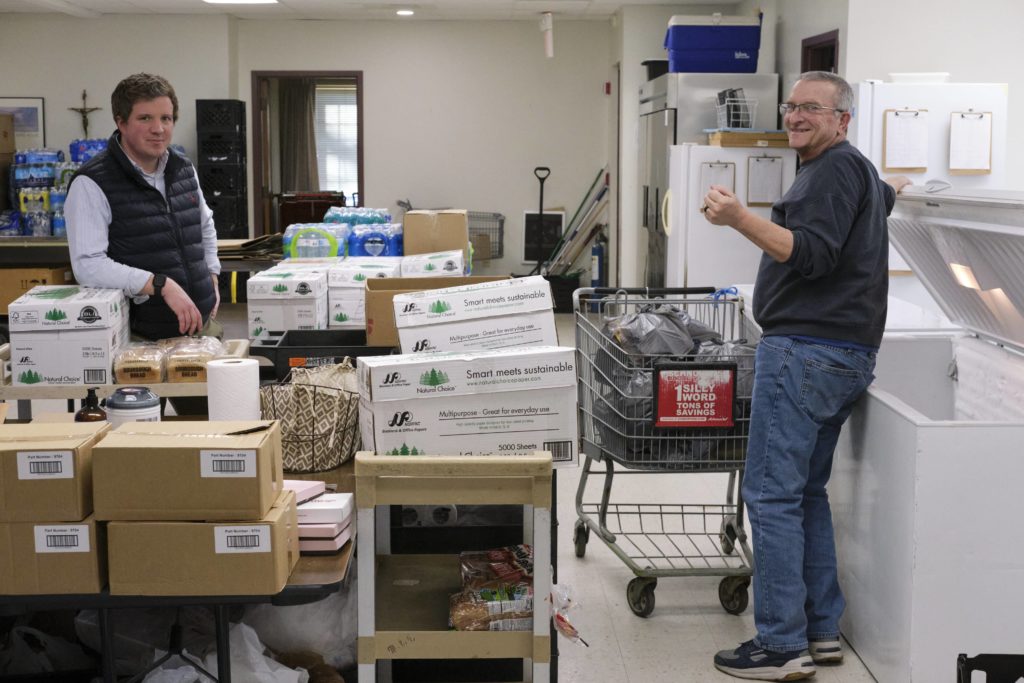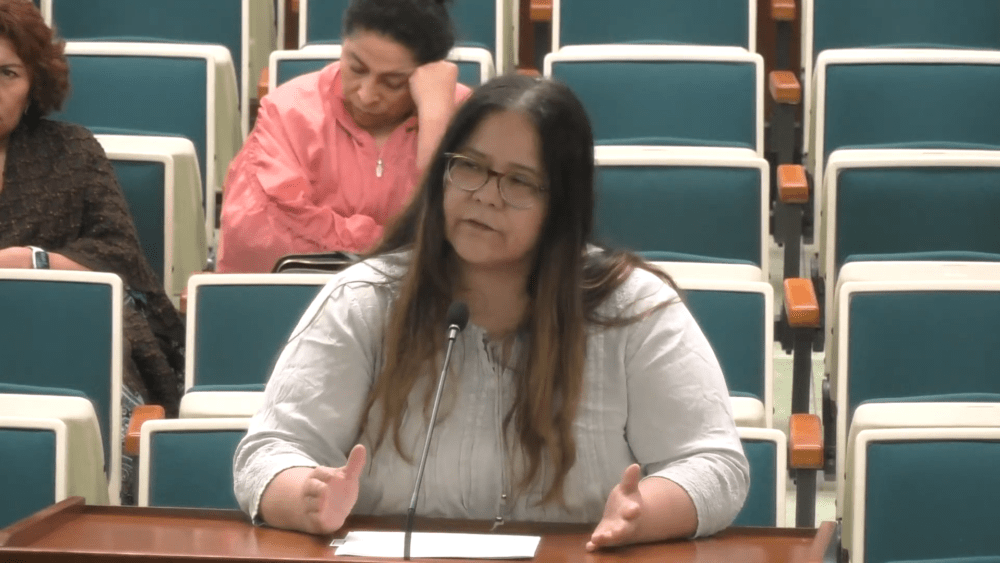
Get the latest news: Subscribe Now
Food is something that every person requires. Additionally, food is something that most people enjoy requiring. Neither of these facts are breaking news stories in and of themselves, of course. People get as excited about their favorite food as they do for most any other aspects of their lives.
But while it brings us great pleasure and fulfillment to eat – both literally and figuratively – having good food, as well as relatively consistent access to it, is something that has been largely taken for granted by the majority of those living in Springfield, as well as large swaths of the United States – prior to and since the COVID-19 pandemic disrupted supply chains and the industry of the world.
To this point, as economist John Kenneth Galbraith famously noted, “More die in the United States of too much food than of too little.” Yet those that frequent the Holy Family Food Pantry and St. John’s Breadline – amongst the bevy of food pantries in Springfield – would beg to differ with the late economist; those languishing in food insecurity across the United States, alongside the federal government itself, would all – also – agree.
When WMAY recently got the opportunity to sit down and speak with the Director of Catholic Charities in the Springfield area – Patrick McConnell – as well as tour the local headquarters and speak with other members of the team, the reality regarding how pivotal food pantries like these are to local people and the community came into stark, and clear focus.
Food pantries serve the public and get food from food banks, which in turn, get food from the public, private companies, and the government who, in turn, get food from various sources – such as farms and farmers, factories, wholesale institutions, and the like.
The confusion regarding each and the entire process is more common than many might realize, Director McConnell made perfectly clear – as did the staff of St. Martin de Porres when WMAY spoke with them; this confusion extends, each food pantry additionally noted, to just precisely who these pillars of the community service each day, week, month and year as well.
Both Director McConnell and his staff, as well as others that WMAY spoke with, consider that the homeless population makes up only between 5% to 20% of those who rely upon their services and resources.
The rest – as told to WMAY – is made up of those who work and still cannot afford to get by – as both Director McConnell and Jerry, a wholly dedicated and enthusiastic volunteer with Catholic Charities, stated themselves.
Director McConnell was succinct concerning the disparity between perception and reality.
“…it is, I would say, probably at a maximum of 20%, but in reality, is probably a little bit lower for the homeless in there. The vast majority of the people on the breadline or at the Holy Family are just low-income families and individuals.”
Jerry too, had similar observations concerning what he witnesses each day he is there.
“…The big misconception – and I have friends that I have to explain this to – is that everybody that comes to the food pantry or the breadline is broke or homeless. That is the farthest thing from the truth. I would say myself that it’s probably between 5% to 10% of the people…”
“Low-income” families, then, make up the great majority of visitors to the different Catholic Charity and food pantry locations across the city – meaning that those who are working as hard as they can, oftentimes performing multiple jobs across a single day, still cannot find relief from their struggles without the assistance of charitable organizations.
Across part one of WMAY’s interview and discussion with Director Patrick McConnell, we explored and chatted regarding many various and different topics – all centering around the work that Catholic Charities seeks to do and the problems that they encounter on a daily basis.

Furthermore, we got to hear more from the director concerning how people can get involved to help, a bit of the history of the Catholic Charities in this community, and whether or not food as a utility could relieve some of the strain that so many individuals face each day.
Below is just part of the discussion that WMAY had with Director McConnell when we visited the Springfield area Catholic Charities office just the other day.
WMAY: Thank you for taking the time to speak with me and have me visit today; before we begin speaking as it concerns Holy Family Food Pantry and other related topics, would you tell me a bit about yourself and your own background and what brought you to Holy Family and Catholic Charities?
PM: My name is Patrick McConnell. I was born and raised in Springfield. I have been the Area Director for Springfield Catholic Charities for a little over a year.
I had been discerning a call to the priesthood. After much consideration and discerning, however, I decided that–although I didn’t believe I was being called to become a priest–I was still being called to serve the Church in some manner.
I started out volunteering at Holy Family Food Pantry in October 2020 and eventually became the Office Manager before I accepted the position of Area Director in 2021.
WMAY: Now, with that done and sorted, please tell me if you could about the Holy Family Food Pantry, a bit of its history, how it functions, and what its role is within the local community and greater city of Springfield?
PM: Catholic Charities of the Diocese in Springfield, Illinois started on March 1, 1925, in Springfield and, over the years, has opened offices throughout the 28-county Diocese.
We have many different programs that Catholic Charities operates, such as St. John’s Breadline and Catholic Legal Services, which offers free legal advice in civil matters.
There is also Holy Family Food Pantry, which you are here today to learn about. Holy Family Food Pantry is located at 120 S. 11th Street in Springfield. We are directly across from the new mass transit hub that is being built.
We are a 30-day Pantry, which means that our clients can come once every 30 days.
I think that our role in the community is to help combat food insecurity, which is, unfortunately, more prevalent than most people realize. We have a large number of seniors, which as the Baby Boom Generation ages, we can expect to see more of too.
WMAY: Do you find that people often misunderstand the differences between food banks and food pantries?
PM: I think most people probably do not realize that there is a difference between food banks and food pantries. That being said, both food banks and pantries perform vitally important functions and roles in combating food insecurity.
The HFFP, as well as St. John’s Breadline, receive commodities twice a month from the Central Illinois Food Bank.
WMAY: How many of those who are without does the Holy Family Food Pantry aid across a week, month, and year? What could the community, local, state and federal governments do to assist organizations like the HFFP and other related religious and secular organizations in diminishing the number of individuals that require your services?
PM: Unfortunately we did see a rise in the number of people we served in 2022. This is due to inflation and the overall poorly performing economy.
Now I should mention that not everyone who comes by the HFFP is coming by on a monthly basis. It could be that they just are experiencing some financial hardships and we are one of their sources to help supplement their income.
I think one easy way the local community can help is through donations whether it be donating food or more importantly money.
At the governmental level, it is all a bit trickier, and I want to try and stay away from politics as much as possible–with that said, obviously, one thing at the Federal level is to combat inflation, so that the charities buying power can, in turn, increase. But, regardless of the governmental level, I think we all need to find solutions to help lift people out of poverty.
WMAY: “Food as a utility” has become a growing idea and movement across the country, as the amount of food available is unevenly distributed across communities across the country–not even considering the world for the sake of this question. Would this innovation – in your estimation – help those who find themselves seeking assistance from private and public groups such as yourself?
PM: I think for whatever reason we don’t think or at least historically think of food as a utility in the same way we think of say electric, water, or mass transit.
This is unfortunate, but I think across the country this is changing, which is good. I also think that we are becoming more and more aware of the importance of having a healthy well-balanced diet.
One of my personal goals for HFFP is to offer healthier options. I would like to see us offer more perishable items such as dairy and produce along with our meat and non-perishable items.
WMAY: What can everyday people do to assist their fellows in this regard? Is there anything, furthermore, that they can do with or through the Holy Family Food Pantry or similar Catholic Charities to alleviate the strain that many of their neighbors face each day?
PM: Going back to something that I mentioned earlier, which is donating food or money that will better allow us to serve the community in better ways.
WMAY: And, finally, does the Catholic Church have a certain moral, and even ordained, responsibility to ensure that it uses its wealth to feed those who have naught the money for it?
PM: I am reminded of the words of St. Caesarius of Arles, “When the poor are starving, Christ too hungers.”
The Catholic community in Springfield and the surrounding area takes seriously its mission–whether it is by and through supporting the HFFP, the SJB, or any of our other programs.
Our thanks to Director McConnell, his staff, and Catholic Charities for their time and diligent work.





